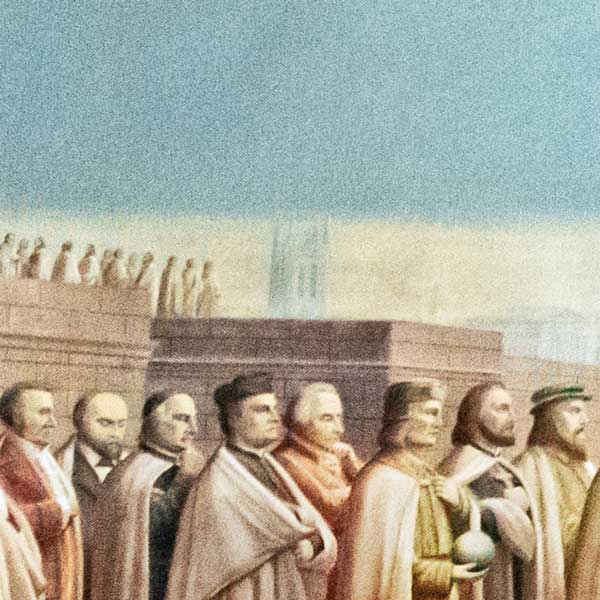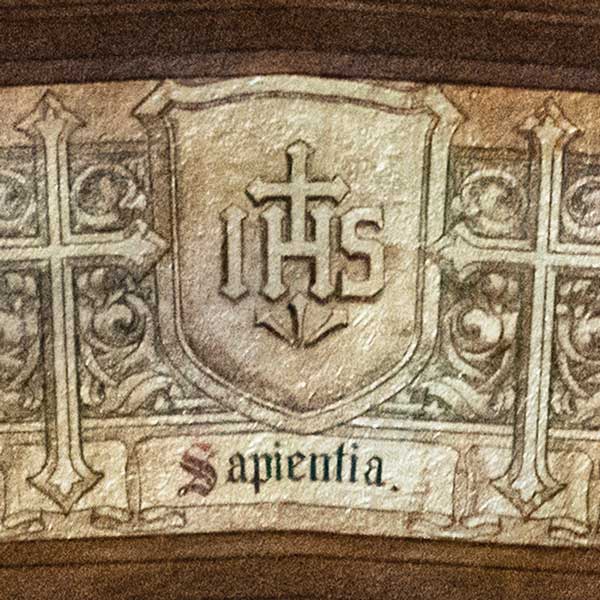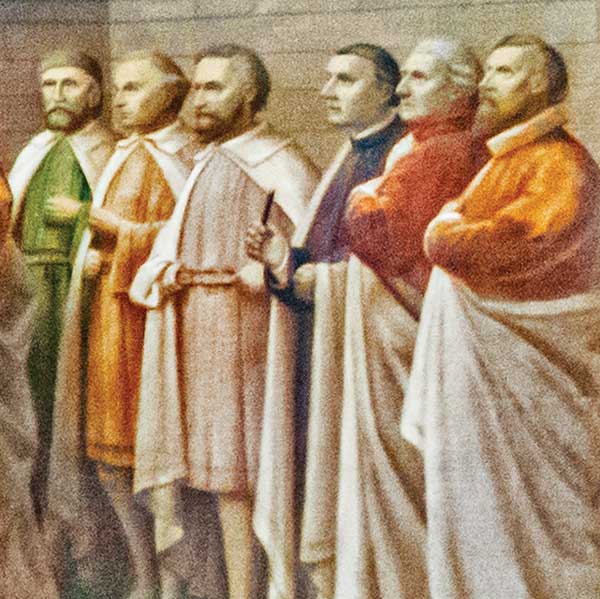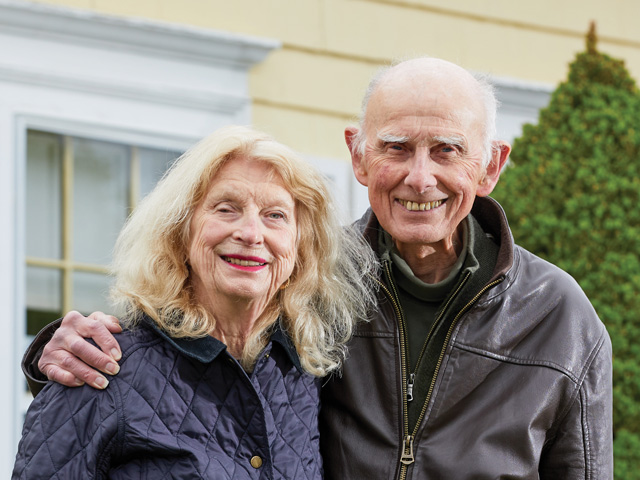Photo: Lee Pellegrini
Mural of the Story
Art History Professor Stephanie C. Leone unpacks Gasson Hall’s allegorical painting The Church: The Educator of Mankind.
The work of the self-taught Jesuit artist Br. Francis J. Schroen can be found all over Gasson Hall, but his best-known creation sits over the stage in Gasson 100: The Church: The Educator of Mankind. The allegorical mural—completed in the early 1900s and measuring twenty-seven by twelve feet—was inspired by Raphael’s Disputa (Disputation of the Holy Sacrament) in the Vatican Palace. These two paintings unite religion and the arts, as well as the heavenly and earthly realms, said Stephanie C. Leone, professor and chair of BC’s Art, Art History, and Film department. Both also boast “a balanced composition, a strong central focus, a large group of figures arranged in a semicircle around the main figure, lifelike and recognizable figures, and perspective to create the illusion of depth and organize the painting,” Leone said.
Here, she identifies and explains just some of the symbols in Schroen’s mural.

In the distant background are cathedrals, churches, and civic buildings that represent the dissemination of Catholicism and knowledge. The classical architectural style on the left is juxtaposed with the Gothic style on the right—they may represent the two branches of Christian pedagogy, medieval scholasticism and Renaissance humanism. Notably, in the left background, one Gothic building stands out: the Gasson Hall tower.

Twenty-two branches of knowledge—including meteorology, sculpture, exploration, and patriotism—are named in the shields surrounding the painting. The Latin inscription “sapientia” (knowledge) is at the apex of the frame with a shield bearing the IHS monogram of the Society of Jesus, indicating the crucial role of the Jesuits in educating humanity.

This is St. Peter’s Basilica in Rome, the Mother Church of Roman Catholicism and the seat of the pope. Through the clouds, Gian Lorenzo Bernini’s famous curved corridors with pedimented temple fronts partially appear. The corridors physically enclose St. Peter’s Square while symbolizing the embracing arms of the Mother Church. St. Peter’s Basilica sits on a rocky foundation that refers to Peter as the rock of the Church.

St. Peter represents the Roman Catholic Church, which receives God’s wisdom and, in turn, disseminates knowledge to humanity through the sacred and profane arts. (This unity of the arts and religion is affirmed by the inscriptions of “ARS.” and “RELIGIO” on the short walls in the foreground.) Shown blessing, St. Peter carries out the Church’s pastoral mission to care for his flock, symbolized by the lambs behind the throne.

The lambs, candlesticks, river, and two large trees refer to Revelation 22:1–2. The lambs symbolize the sacrifice of Christ, the Son of God, who was crucified on the wood from the Tree of Life. The flowing water refers to Christ’s rebirth, which gave new life to humanity. The seven candlesticks symbolize the seven churches described in the Book of Revelation.

Standing in groupings of three, the figures that flank Peter are the biblical/historical representatives of the sacred and profane arts inscribed in the shields surrounding the allegory. For instance, starting from Peter, in the seventh group on the right, the bearded figure in a pale rose costume is Michelangelo Buonarroti (1475–1564), who was one of the architects of St. Peter’s Basilica. ◽


 print
print mail
mail


v1c-640x480.jpg)